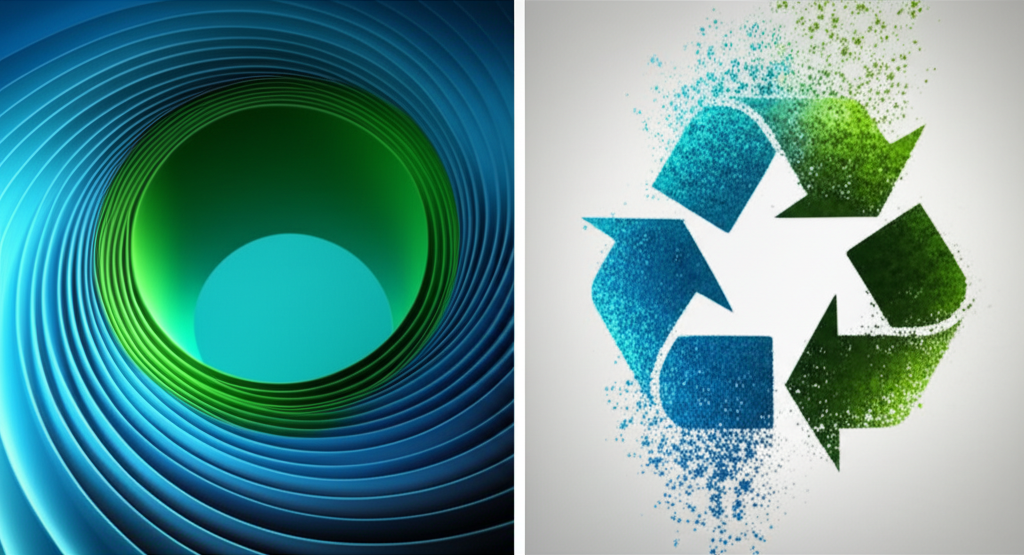Introduction: With growing environmental awareness, “Recyclable” and “Degradable/Biodegradable/Compostable” have become popular terms in the packaging industry. However, these two concepts are often confused or misused, which can mislead consumers and put brands at risk of "greenwashing." As a professional packaging solutions provider, PackRapid is committed to helping clients clearly understand the true meaning of these terms and choose the most appropriate eco-label based on product characteristics and actual conditions, truly practicing sustainable development.
I. Understanding “Recyclable”
- Definition: “Recyclable” packaging refers to packaging whose main materials can be collected, sorted, and processed through existing, large-scale recycling systems after disposal, and then re-processed into new products or raw materials.
- Core Elements:
- Material Recyclability: Not all materials are easily recyclable (such as some composite materials, dark-colored or small-sized plastics).
- Mature Recycling Infrastructure: The target market must have corresponding recycling facilities and technologies to handle the material.
- Correct Consumer Sorting Behavior: Consumers need to correctly dispose of recyclables into the recycling system.
- Common Recyclable Packaging Materials:
- Paper Products: Various paper boxes, cartons, paper bags (such as FSC-certified paperboard commonly used by PackRapid). Note that the recyclability of laminated paper and oily paper is more difficult.
- Glass: Glass bottles, glass jars.
- Metal: Aluminum cans, steel cans.
- Some Plastics: Such as PET (No. 1 plastic), HDPE (No. 2 plastic). The recycling rates of other types of plastics vary greatly.
- PackRapid’s Practice: We prioritize the use of single-material, easily identifiable and separable materials with mature recycling channels in the target market, such as a high proportion of various papers and paperboards. We also consider the ease of separating different material components in the design to improve recycling efficiency.
II. Distinguishing the “Degradable” Family (Degradable, Biodegradable, Compostable)
“Degradable” is a broad term, and its subcategories, “biodegradable” and “compostable,” are more meaningful, but require extra caution when used.
-
Degradable:
- Definition: Refers to materials that decompose and break down under specific environmental conditions (such as light, heat, or chemical reactions).
- Note: “Degradable” itself is not equivalent to being environmentally friendly. Some "oxidative degradable" plastics only break down into microplastics, causing greater harm to the environment. PackRapid takes a cautious approach to such labels and does not easily recommend them.
-
Biodegradable:
- Definition: Refers to the process by which materials can be decomposed by microorganisms (such as bacteria and fungi) into natural elements (such as carbon dioxide, water, and biomass).
- Key Issues:
- Degradation Conditions: Under what conditions (soil, water bodies, specific industrial facilities)?
- Degradation Time: How long does it take to completely degrade?
- Degradation Products: Will any harmful substances remain?
- PackRapid’s View: Without clear degradation environment and time standards (such as relevant certifications), the "biodegradable" label may lack practical significance or even mislead consumers.
-
Compostable:
- Definition: Refers to materials that can be decomposed by microorganisms under specific composting conditions (industrial composting or home composting), eventually transforming into nutrient-rich compost. This is the highest standard and most environmentally valuable type of "biodegradable."
- Important Certifications: Requires certification from authoritative institutions (such as BPI in the US, TÜV Austria OK compost HOME/INDUSTRIAL in Europe) to prove that it can decompose safely within a specified time in a specific composting environment and does not contain substances harmful to compost quality.
- PackRapid’s Considerations: Compostable packaging is an excellent choice for specific scenarios (such as food packaging processed with organic waste). However, brands need to consider:
- Does the target market have corresponding industrial composting facilities?
- Do consumers have the conditions for home composting?
- If it ends up in a landfill, compostable materials may produce methane (a potent greenhouse gas) in an anaerobic environment.
III. How to Choose the Right Eco-Label for Your Product?
PackRapid suggests that brands consider the following factors:
- Product Characteristics and Protection Needs: The basic function of packaging is to protect the product; don't reverse the priorities.
- Recycling/Composting Infrastructure in the Target Market: This is key to determining the practical significance of the label. In areas lacking corresponding facilities, claiming "compostable" may not achieve its environmental value.
- Life Cycle Assessment (LCA) Thinking: Comprehensive assessment of the environmental impact of different schemes throughout the entire process from raw material acquisition, production, transportation, use, to waste disposal.
- Avoid "Greenwashing": Ensure that environmental claims are true, accurate, and verifiable, without exaggeration. PackRapid is committed to providing transparent and professional consulting.
- Consumer Education: Provide clear disposal instructions on the packaging to guide consumers on proper recycling or composting.
IV. PackRapid’s Professional Suggestions
- Prioritize "Reduce" and "Reuse": This is a higher priority environmental strategy than recycling and degradation. PackRapid strives for lightweighting and material optimization in structural design.
- For "Recyclable": Prioritize single, easily recyclable materials, and ensure that the design facilitates recycling.
- For "Degradable/Compostable": Carefully evaluate, and only consider if there is clear certification, applicable scenarios, and supporting infrastructure. PackRapid will work with customers to analyze its applicability.
Conclusion: "Recyclable" and "Degradable" represent different waste disposal paths and environmental impacts. When choosing eco-labels, brands must go beyond superficial concepts and deeply understand the scientific basis and real-world conditions behind them. With professional knowledge and a commitment to sustainable development, PackRapid can help your brand make informed decisions, choose truly responsible packaging solutions that are both in line with environmental trends and effectively communicate brand value, avoiding unnecessary misunderstandings and risks. Partner with PackRapid to make your commitment to environmental protection resonate.

